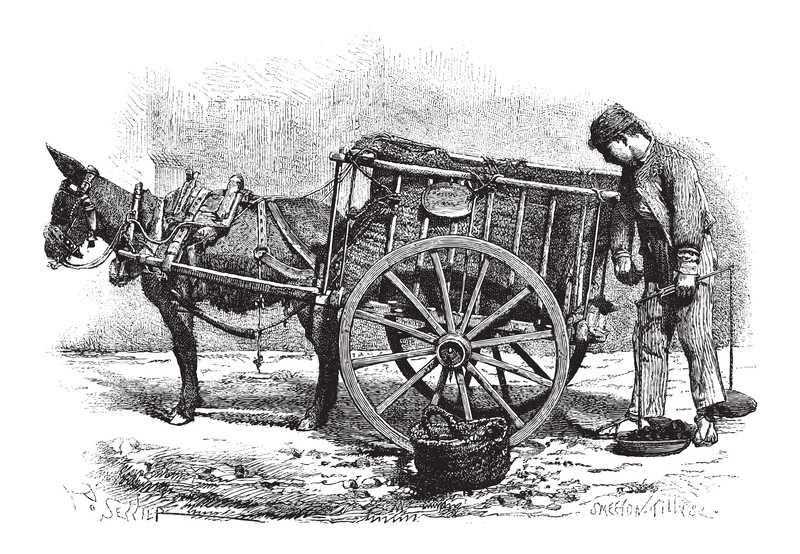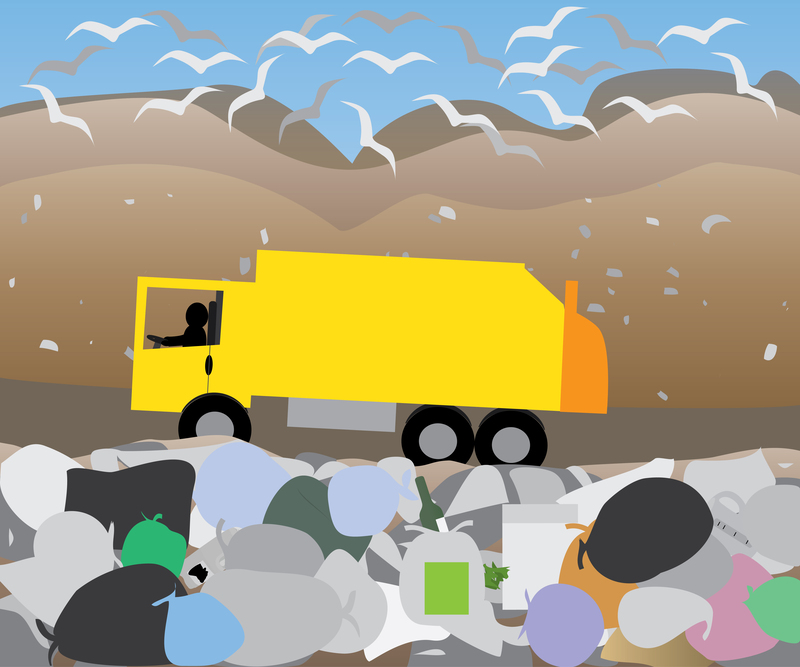Building a Circular Economy with Packaging and Cardboard Disposal
In the modern world, sustainability is no longer just a buzzword--it's a crucial strategy for business and environmental longevity. One of the most impactful ways to drive sustainability is by embracing the principles of the circular economy, particularly in the domains of packaging materials and cardboard disposal. In this comprehensive guide, we'll explore what a circular economy is, why packaging and cardboard disposal are key to its success, innovative practices that are setting industry standards, and tangible steps you can take to contribute to a greener world.

Understanding the Circular Economy: A New Approach to Resources
The circular economy is an alternative to the traditional linear economy, which follows the "take, make, dispose" model. In contrast, a circular economic model is all about closing the loop -- reducing waste, maximizing resource efficiency, and fostering reuse, recycling, and regeneration. This means products and materials, like packaging and especially cardboard, are kept in use for as long as possible.
- Reduce: Limit the creation of waste at the source by designing products and packaging for minimal environmental impact.
- Reuse: Encourage repeated use of products and packaging before they enter waste streams.
- Recycle: Process materials for further use in manufacturing, thus reducing the need for virgin resources.
Cardboard packaging, one of the world's most prevalent waste materials, lies at the heart of this transformation.
Why Packaging and Cardboard Disposal are Essential to the Circular Economy
Packaging is ubiquitous in consumer and industrial markets, and cardboard is the backbone of shipping and storage worldwide. The vast volumes of cardboard and packaging waste have significant environmental implications if not disposed of or treated properly. Unfortunately, much of it still lands in landfills, contributing to pollution and wasted resources.
Today, building a responsible circular economy with packaging and cardboard disposal is crucial for:
- Conserving Natural Resources: Recycling and reusing packaging materials means fewer trees are cut down and less energy is used in manufacturing.
- Reducing Carbon Emissions: Using recycled cardboard requires less processing and lowers greenhouse gas production compared to making it from virgin materials.
- Minimizing Landfill Waste: Innovative cardboard recycling and proper disposal dramatically decrease the volume of waste going to landfills.
- Supporting Green Jobs: Recycling and reprocessing materials create employment opportunities and promote green business models.
Challenges in Cardboard Packaging Waste Management
Despite being highly recyclable, cardboard waste poses several unique challenges:
- Contamination: Cardboard soiled by food or other substances can make recycling problematic.
- Brittleness: Cardboard loses strength after several recycling cycles, making it harder to reprocess.
- Separation Issues: Cardboard is often combined with other materials in packaging, complicating recycling efforts.
- Collection Infrastructure: Inadequate separation at the source leads to recyclable cardboard ending up as landfill waste.
Solving these challenges is fundamental to realizing the benefits of a circular economy with packaging and cardboard disposal.
Innovative Solutions for Cardboard Disposal and Packaging Circularity
1. Eco-Friendly Packaging Design
Packaging companies and brands are adopting innovative designs that use less material, avoid mixed materials, and prioritize recyclability. Designs that use mono-materials or are easily separable directly support circular processing.
2. Closed-Loop Recycling Systems
Large retailers and manufacturers are increasingly using closed-loop recycling systems, where cardboard packaging waste is collected, recycled, and turned back into new packaging for the same supply chain. For example, grocery stores may bale cardboard waste and send it directly to recycling mills that supply new shipping boxes.
3. Incentivized Consumer Participation
Brands are encouraging shoppers to return or properly recycle packaging through deposit-return schemes, trade-in programs, and educational campaigns.
4. Corporate Partnerships with Waste Management Specialists
By partnering with cardboard recycling and waste management companies, businesses can ensure greater volumes of packaging materials are efficiently recycled.
5. Emergence of Compostable Cardboard
Some cardboard packaging is now made from materials safe for composting, providing an alternative method of disposal where recycling is not possible.
Best Practices for Cardboard Packaging Disposal in the Circular Economy
For Businesses:
- Source Responsibly: Use suppliers that offer recycled or sustainably sourced cardboard packaging materials.
- Design for Circularity: Choose packaging with minimal use of dyes, coatings, and multi-material layers.
- Educate Stakeholders: Train employees and inform customers about the importance and process of proper cardboard disposal.
- Collaborate on Collection: Work with facility managers, recycling firms, and local authorities to streamline cardboard collection and separation.
For Consumers:
- Break Down Boxes: Flatten and clean cardboard boxes before placing them in recycling bins to save space and prevent contamination.
- Avoid Soiling: Keep food and liquids away from packaging intended for recycling.
- Check Local Guidelines: Ensure your city's recycling program accepts cardboard and follow specific sorting requirements.
Business Benefits of Circular Packaging and Cardboard Disposal
Beyond environmental gains, embracing a circular economy model with packaging and cardboard waste offers significant business advantages:
- Cost Savings: Recycling cardboard is often cheaper than landfill disposal and can reduce the need for virgin packaging materials.
- Reputation Management: Demonstrating a commitment to the environment boosts brand image and consumer trust.
- Regulatory Compliance: As governments enact stricter environmental regulations for packaging and waste, circular practices help avoid fines and penalties.
- Innovation and Differentiation: Eco-friendly packaging solutions differentiate your brand in a competitive market.
Emerging Trends in Packaging and Cardboard Circularity
- Smart Packaging: RFID tags or QR codes on packaging to help consumers recycle responsibly.
- Reusable Delivery Packaging: Companies experimenting with returnable cardboard boxes for repeated deliveries.
- Biodegradable Coatings: Innovations that allow coated cardboard to break down more easily in compost or recycling streams.
- Extended Producer Responsibility: Laws placing the onus on producers to manage the lifecycle of their packaging, encouraging sustainable design.
The Role of Technology in Circular Packaging Systems
The modern circular economy thrives on technological advancements that are making recycling and disposal more efficient and effective.
- AI-Powered Sorting Facilities: High-speed conveyor belts and AI-driven robots accurately sort cardboard from other materials, reducing contamination and boosting recycling rates.
- Material Tracking: Blockchain and IoT devices track packaging materials across their lifecycle, ensuring transparency and improving end-of-life management.
- Data Analytics: Companies use big data to analyze packaging usage and disposal, improving design and operational efficiency.
How Governments and Communities Foster a Circular Economy in Packaging
Circular economy success in packaging and cardboard waste management relies on collaborative efforts across sectors:
- Policy Initiatives: Many regions incentivize cardboard recycling through landfill taxes or bans on recyclable products in landfill.
- Public-Private Partnerships: Municipalities, waste companies, and manufacturers work together to build robust recycling infrastructure.
- Community Education: Public campaigns boost awareness of circular economy principles and proper cardboard packaging disposal.
Step-By-Step Guide to Building a Circular Economy with Cardboard Packaging
Below is a stepwise approach for organizations and communities aspiring to maximize packaging reuse and recycling:
- Assessment: Audit packaging use and waste streams to understand the scope of recycling opportunities.
- Engagement: Involve all stakeholders, including employees, suppliers, and customers, in sustainability initiatives.
- Implementation: Adopt recyclable packaging, train staff, and deploy standardized collection systems.
- Measurement: Track results, gather feedback, and optimize processes for higher recycling yields and lower waste.
- Education: Continue to educate and inspire the wider community on the benefits and methods of circular cardboard disposal.
Case Studies: Circular Packaging Initiatives in Action
Retail Industry:
Global e-commerce leaders have committed to replacing plastic wrap with recyclable cardboard inserts, and many are now reusing shipping boxes for multiple delivery cycles before recycling.
Food & Beverage:
Supermarkets and food delivery services are investing in compostable cardboard trays and cartons, proving that it's possible to combine food safety with eco-friendliness. Collaborative take-back schemes further support cardboard circulation.
Manufacturing:
Factories are maximizing efficiency by using modular packaging made entirely of recycled cardboard, then collecting and recycling this material internally.

The Future of Packaging and Cardboard Waste in the Circular Economy
As the world moves toward net-zero targets and sustainable development goals, the transition to a circular economy for packaging and cardboard waste is accelerating. Innovations in material science, digital tracking, and consumer engagement will further shift the packaging landscape. Ultimately, the circular economy represents not just an environmental imperative, but an economic opportunity for those who act decisively.
Conclusion: How You Can Drive the Circular Economy with Cardboard Packaging
Whether you're a business leader, policymaker, or consumer, you play a role in building a circular economy through mindful packaging choices and responsible cardboard disposal. Look for suppliers committed to recycling, break down and clean your cardboard boxes before recycling, and support policies and practices that promote a sustainable future. The journey toward circularity is ongoing, but every action counts in closing the loop. By embracing these principles today, we jointly invest in the health of our planet and ensure prosperity for generations to come.
Be a part of the solution--embrace circular packaging, recycle your cardboard, and inspire others to do the same.